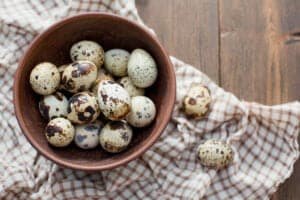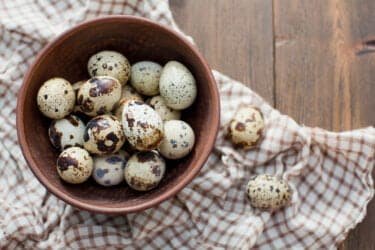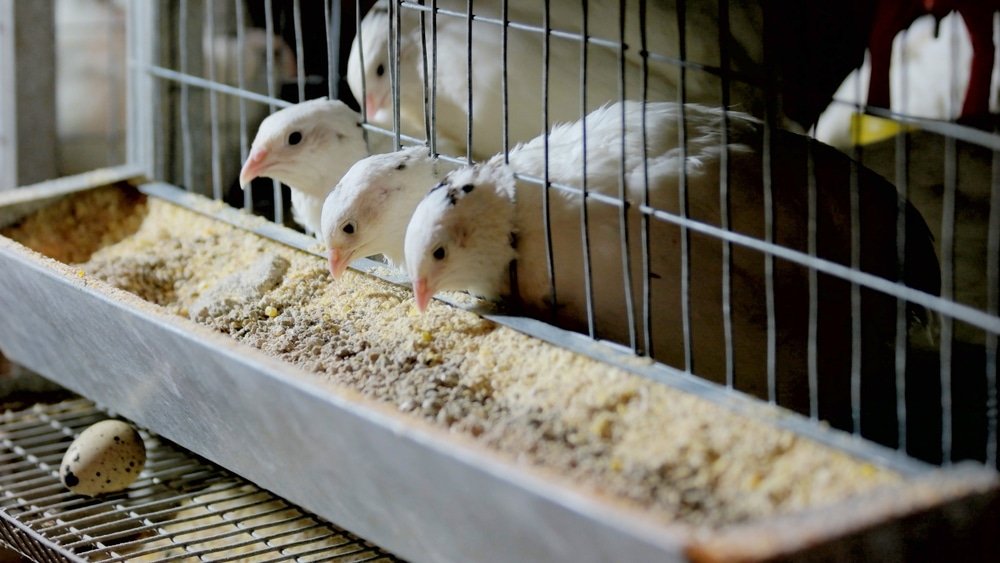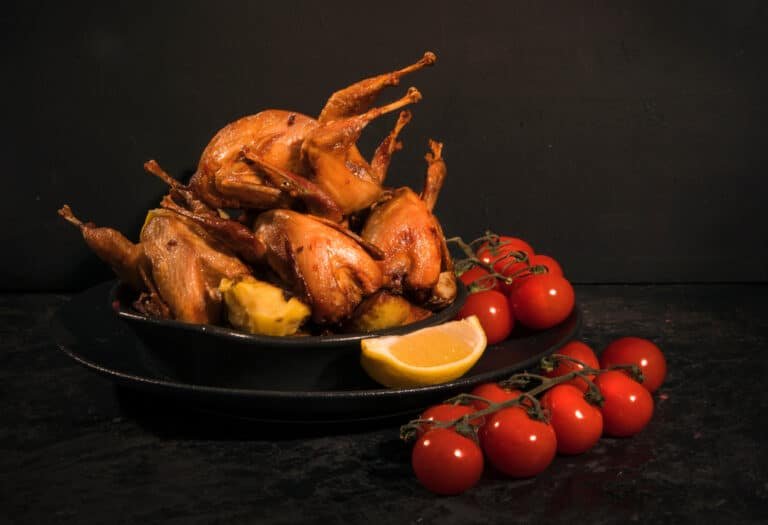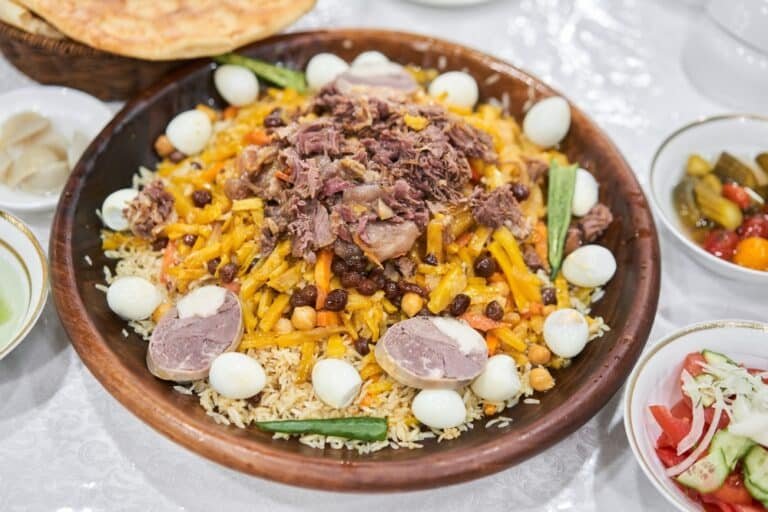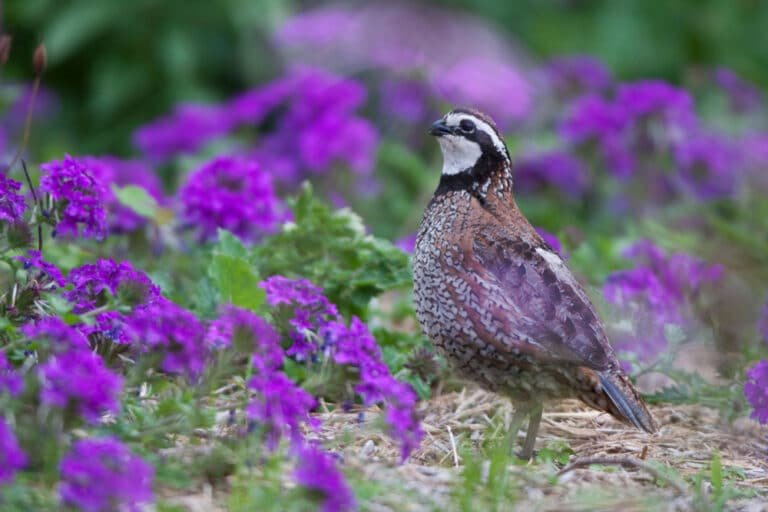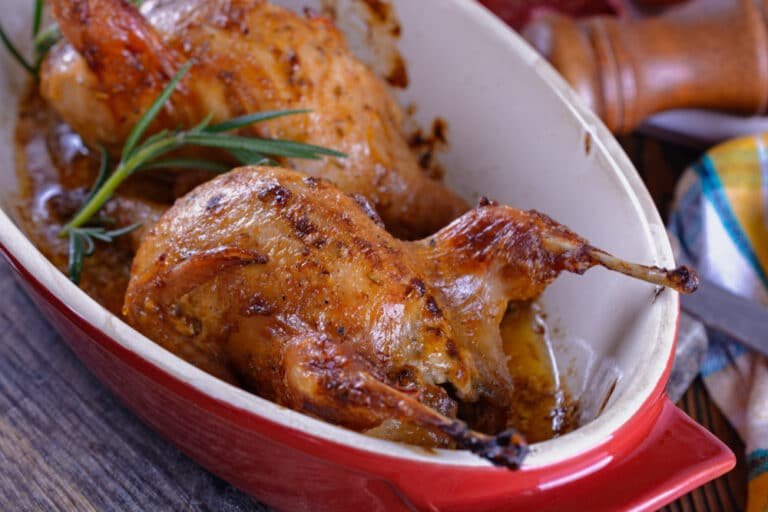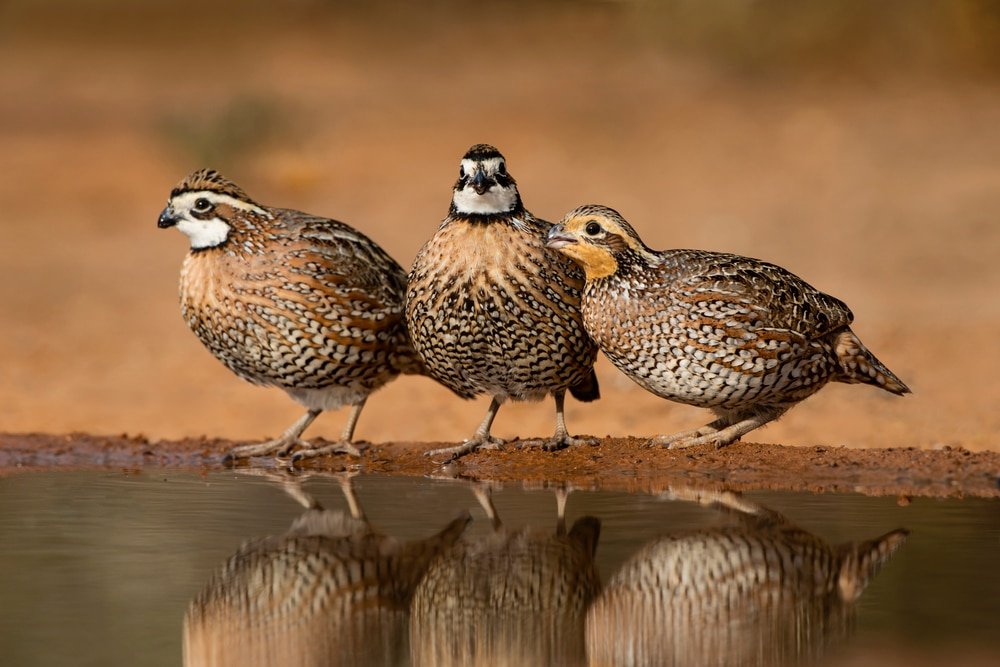From Farm to Table: Why Quail Eggs Are The Best
Quail eggs, with their miniature size and exquisite taste, have long been regarded as a culinary delicacy in various cultures worldwide. These petite eggs are packed with flavor and distinct richness that sets them apart from their larger counterparts. While chicken eggs are more commonly consumed, quail eggs offer a unique experience for adventurous food enthusiasts seeking to elevate their gastronomic journey.
Importance of quail eggs in various cuisines around the world
Quail eggs hold great significance in numerous cuisines across the globe, each embracing these little gems for their unique qualities. In Japanese cuisine, quail eggs are meticulously used in dishes like tamago kake gohan (raw egg over rice) or served alongside sushi to enhance visual appeal and taste. Similarly, Chinese cuisine employs quail eggs in stir-fries or as dumpling fillings, adding texture and flavor to traditional recipes.
In European countries like France and Italy, chefs incorporate quail eggs into salads or use them as garnishes on top of gourmet dishes to add an elegant touch. Furthermore, Mexican cuisine showcases the versatility of quail eggs by using them in traditional recipes such as chilaquiles or huevos rancheros, where their small size complements the overall presentation.
Quail eggs also play an essential role in Middle Eastern cuisine. They are often pickled and served as part of mezze platters, providing a burst of tangy flavors that perfectly accompany other appetizers like hummus or falafel.
In some regions of Africa and Asia, particularly Vietnam and Thailand boiled quail eggs are popular street food snacks enjoyed plain or dipped into spicy sauces. The importance of quail eggs extends beyond just their delicious taste; they also hold cultural significance in various traditions.
In many cultures, quail eggs symbolize fertility, abundance, and prosperity. They are often included in celebratory feasts or religious ceremonies to bless those partaking in the festivities.
Quail eggs captivate culinary enthusiasts worldwide with unique characteristics and distinct flavor profiles. They find themselves at the heart of diverse cuisines, enriching recipes and adding a touch of elegance to dishes across continents.
Whether incorporated into fine dining creations or enjoyed as a humble street food delight, quail eggs intrigue taste buds and elevate the dining experience for those seeking gastronomic excellence.
Nutritional Composition between Quail and Chicken Eggs
Quail eggs have long been acknowledged as a nutritional powerhouse, rivaling the more commonly consumed chicken eggs in several aspects. A remarkable comparison between these two egg varieties reveals fascinating differences in their nutritional compositions.
While quail and chicken eggs provide essential nutrients, the former stands out with its unique profile. One notable difference in the nutritional composition of quail and chicken eggs is their size.
Quail eggs are significantly smaller than chicken eggs, typically measuring about one-fifth the size of a standard hen’s egg. However, despite their diminutive appearance, quail eggs pack a powerful punch regarding nutrient density.
High Protein Content
Proteins are the building blocks of life and play a crucial role in various bodily functions. Quail eggs boast an impressive protein profile that outshines that of chicken eggs.
Gram for gram, quail eggs contain more protein than their larger counterparts. This higher protein content makes them ideal for individuals seeking to boost muscle growth and repair tissue damage.
Moreover, quail egg proteins are often considered superior due to their amino acid composition. These tiny oval gems are rich in essential amino acids like lysine, tryptophan, and cysteine, contributing to overall health and well-being.
Essential Vitamins and Minerals
In addition to proteins, quail eggs offer an array of essential vitamins and minerals vital for maintaining optimal health. They are particularly rich in vitamins A, B2 (riboflavin), B12 (cobalamin), and minerals such as iron and phosphorus.
Vitamin A is crucial for healthy vision, immune function, and cell growth while contributing to skin health. Meanwhile, riboflavin plays a key role in energy production by assisting in the metabolism of fats, carbohydrates, and proteins.
Quail eggs also provide substantial amounts of vitamin B12, essential for red blood cell formation and neurological well-being. Furthermore, the iron content in quail eggs surpass that of chicken eggs.
Iron is essential for oxygen transport throughout the body and prevents iron deficiency anemia. Additionally, phosphorus, another mineral abundant in quail eggs, promotes healthy bone development and aids energy production.
While both quail and chicken eggs offer valuable nutrition, quail eggs stand out with their higher protein content and rich profile of vitamins and minerals. These petite delicacies pack a powerful nutritional punch despite their small size.
Incorporating quail eggs into your diet can be an excellent way to diversify your nutrient intake and reap their numerous health benefits. Whether you choose to boil them gently for a delectable snack or incorporate them into savory dishes such as Scotch quail’ eggs or tamago kake gohan – the traditional Japanese dish of raw egg mixed with rice – you’re bound to savor not only their unique flavor but also their remarkable nutritional value.
Boosting the Immune System with High Levels of Antioxidants
Unleashing the Power of Quail Eggs
Quail eggs, those petite wonders of nature, pack a powerful punch for boosting the immune system. These tiny, speckled gems are bursting with antioxidants, compounds that help protect our bodies from harmful free radicals.
Antioxidants work diligently to neutralize these free radicals, which can cause cellular damage and lead to diseases like cancer and heart disease. The high antioxidants in quail eggs make them valuable to any diet.
A Nutritional Goldmine
Quail eggs are rich in antioxidants and contain essential vitamins and minerals that contributing to overall health and well-being. These nutritional powerhouses boast significant amounts of vitamins A, B12, and D and minerals like iron, calcium, and phosphorus. Consuming quail eggs regularly can help fortify your immune system by providing key nutrients necessary for optimal functioning.
Nourishing Your Body’s Defenses
The immune-boosting properties of quail eggs go beyond their antioxidant content. These delicate orbs are known for their ability to enhance the body’s production of white blood cells, which are crucial in defending against infections and viruses. Additionally, quail eggs contain high levels of selenium—a potent antioxidant mineral that strengthens the immune system by reducing inflammation and supporting proper thyroid function.
A Natural Brain Booster
Apart from bolstering the immune system, quail eggs significantly benefit brain health. Rich in choline—a nutrient necessary for brain development—quail eggs provide vital support for cognitive function throughout life. Choline is crucial in neurotransmitter synthesis and overall brain health by promoting memory retention and supporting learning processes.
Omega-3 Fatty Acids for Cognitive Excellence
Furthermore, quail eggs are a remarkable source of omega-3 fatty acids. These essential fats play a vital role in brain function, improving cognitive performance and reducing the risk of age-related cognitive decline. Omega-3 fatty acids found in quail eggs have been linked to enhanced memory, increased focus, and improved overall mental well-being.
Incorporating quail eggs into your diet can be as simple as boiling them for a quick and nutritious snack or incorporating them into various recipes. Whether you enjoy their immune-boosting antioxidants or harness their brain-enhancing properties, these tiny marvels are an excellent addition to any health-conscious individual’s menu.
So why not indulge in the bounty of nature’s goodness by adding some quail eggs to your next culinary endeavor? Your immune system and brain will thank you!
Preparation Techniques for Quail Eggs
Exploring the Diversity of Popular Dishes
Quail eggs have gained popularity in the culinary world for their delicate flavor and ornamental appeal. One notable dish showcasing quail eggs’ versatility is Scotch quail’ eggs. This British delicacy consists of a soft-boiled quail egg encased in seasoned sausage meat, coated with breadcrumbs, and then deep-fried to golden perfection.
The contrasting textures of the crispy outer layer, savory sausage, and luscious yolk create an indulgent treat. Another renowned dish incorporating quail eggs is Japanese tamago kake gohan, a traditional comfort food.
It involves serving a raw or lightly cooked quail egg over hot rice, soy sauce, and other preferred seasonings. Mixing these ingredients creates a creamy sauce that coats the rice, infusing it with richness while enhancing its flavors.
Exploring Different Cooking Methods
When cooking quail eggs, numerous techniques suit various culinary preferences. Boiling is one of the most common methods used to cook quail eggs. To achieve a soft-boiled consistency, gently place the eggs in boiling water for approximately two minutes and thirty seconds.
Increase the cooking time for a fully boiled egg by an additional minute. For those seeking alternative cooking methods, poaching offers an elegant way to enjoy quail eggs.
Carefully crack each egg into simmering water containing a touch of vinegar to help solidify the whites more efficiently. Poach them for approximately one minute until they reach the desired doneness – runny or firm.
Frying is another popular method for preparing quail eggs. Heat a small amount of oil or butter in a non-stick pan over medium-high heat and carefully crack the eggs.
Cook until desired yolk consistency, flipping them gently if desired. The small size of quail eggs allows for quick and even cooking, making them suitable for frying.
Pickling quail eggs is a unique way to preserve them while infusing delightful flavors. Start by hard-boiling the eggs, then let them cool before peeling.
Place the peeled eggs in a jar with brine from vinegar, water, sugar, and spices such as cloves, peppercorns, or chili flakes. Allow the eggs to marinate in the refrigerator for at least one week before enjoying their tangy taste.
Incorporating quail eggs into your culinary repertoire allows for creative experimentation and opens up a world of possibilities to enhance savory and sweet dishes. Note: If you are considering using quail eggs for hatching or incubating quail eggs instead of culinary purposes, do not attempt to cook or consume these eggs as they are intended solely for breeding purposes.
Unique Features of Quail Eggs
Size Comparison: Smaller Than Chicken, but a Higher Yolk-to-White Ratio
Quail eggs, renowned for their unique size, offer a delightful contrast to the more familiar chicken eggs. These diminutive treasures are significantly smaller than their poultry counterparts, typically measuring around 1.5 inches in length.
Despite their small stature, quail eggs punch in flavor and nutrition. What sets them apart is the remarkable yolk-to-white ratio they possess.
While chicken eggs tend to have a larger white portion of the yolk, quail eggs boast a relatively larger yolk that adds richness and depth to any dish they grace. The high yolk-to-white ratio of quail eggs contributes to their distinctive taste and enhances their versatility in various culinary preparations.
The rich and creamy consistency of the yolk lends itself well to dishes like omelets, custards, or even deviled quail eggs. Additionally, this unique feature allows chefs and home cooks to experiment with creative recipes, highlighting the intense flavors locked within these miniature wonders.
Distinctive Speckled Shell Patterns and Colors
One cannot help but be captivated by the visual allure of quail eggs’ distinctive speckled shell patterns and colors. Each egg is adorned with an intricate mosaic of spots ranging from brown to black or gray hues on a cream-colored base. The enchanting aesthetics make these tiny delicacies not just a culinary delight but also an aesthetic pleasure.
Beyond their pleasing appearance, the speckled shells serve nature’s ingenious protective armor for delicate quail embryos during incubation. These intricate patterns act as camouflage in wild habitats where quail lay their eggs on forest floors or grassy areas, making them less conspicuous to potential predators.
Regarding food presentation, quail eggs’ speckled shells add a touch of visual appeal to any dish they grace. They effortlessly elevate the aesthetic value of appetizers, salads, or canapés, making them perfect for upscale gatherings or intimate dinners.
The unique features of quail eggs set them apart from their larger poultry counterparts. Their smaller size allows for a higher yolk-to-white ratio, intensifying flavor and expanding culinary possibilities.
Furthermore, the distinctive speckled shell patterns and colors add aesthetic charm and serve as nature’s ingenious defense mechanism. Whether using quail eggs in a recipe or simply admiring their visual appeal on a plate, these miniature marvels never fail to leave an impression.
The Art of Collecting Quail Eggs
Breeding Habits and Egg-Laying Patterns of Quail
Quail are fascinating birds known for their small size and remarkable ability to lay eggs. Understanding their breeding habits and egg-laying patterns is crucial for collecting quail eggs. Unlike chickens, quail are ground-nesting birds constructing shallow nests in grassy areas or brush piles.
They prefer secluded places away from predators, where they feel safe to lay their precious eggs. Female quail typically start laying eggs when they reach about seven to eight weeks of age, which makes identifying the right time to collect them essential.
The egg-laying patterns of quail depend on various factors such as breed, environmental conditions, and daylight duration. Most domesticated quail breeds have a consistent laying pattern throughout the year.
They lay one egg daily, usually in the early morning hours. However, some variations may occur due to stress, lighting conditions, or temperature fluctuations.
Tips for Safely Collecting Fresh Quail Eggs
Collecting fresh quail eggs can be exciting when done correctly and safely. Whether you have domesticated quail in your backyard or you’re exploring the wilderness in search of wild bird nests, following these tips will help ensure a successful collection without disturbing the natural processes:
1. Observe without interfering: While observing nesting sites or bird habitats, it’s crucial not to disturb the birds unnecessarily. Sit quietly at a distance and use binoculars to study their behavior without causing stress.
2. Identify active nests: Look for signs of recent activity around potential nesting sites, such as disturbed vegetation or droppings near ground level. This indicates that a nest may be nearby.
3. Handle with care: It’s important to be gentle and cautious when handling quail eggs. Quail eggs have delicate shells, so avoid squeezing or applying excessive pressure that could cause damage. Hold the eggs carefully to prevent any accidental drops.
4. Respect wildlife laws: If you’re collecting quail eggs from wild birds, familiarize yourself with local wildlife regulations. Some areas may have specific rules for collecting wild bird eggs to protect their populations and habitats.
5. Time your collection wisely: If you are raising domesticated quail, it’s best to collect their eggs frequently rather than leaving them in the nest for too long. Generally, quail eggs can be stored safely at room temperature for up to a week before consumption or incubation.
By understanding quail breeding habits and egg-laying patterns while following these tips for safe collection, you can enjoy harvesting fresh quail eggs without disrupting these remarkable birds’ natural processes.
Whether using them in delicious recipes or considering hatching them into adorable baby quail, collecting and appreciating these tiny treasures adds a sense of wonder to your culinary adventures and appreciation for nature’s intricate wonders.
Quail as Egg Producers
The Different Breeds of Domesticated Quail
When researching quail eggs, you immediately determine that not all breeds are created equal regarding production capacity. Some domesticated quail breeds have gained a reputation for being exceptional egg layers, making them highly sought after by farmers and enthusiasts alike.
Coturnix Quail (Coturnix japonica)
The Coturnix quail, also known as the Japanese quail, is one of the most popular breeds for commercial egg production. These small birds can efficiently convert feed into eggs and start laying at six weeks old. They produce an impressive average of 280-320 eggs per year per bird.
Bobwhite Quail (Colinus virginianus)
While primarily recognized as game birds, certain strains of Bobwhite quail have been selectively bred for their egg-laying capabilities. Although they may not match the Coturnix in sheer quantity, Bobwhite quail are still valued for their large-sized eggs and unique flavor profile.
The Quantity and Quality of Quail Egg Production
Dietary considerations
An appropriate diet is critical in ensuring optimal egg production in quail. A well-balanced feed containing high-quality protein sources supports the nutritional demands for consistent and abundant egg laying.
“Quail require a diet with at least 22-24% protein to reach their full egg-laying potential.”
Lighting and environmental conditions
Like many other birds, Quail is affected by changes in day length. A minimum of 14 hours of daylight is recommended to stimulate consistent egg production. Artificial lighting can be used to supplement natural daylight during periods of shorter days.
“Maintaining the right environmental conditions with appropriate lighting schedules helps regulate hormonal balance, ensuring steady egg production.”
Breeding age and health
Age and overall health influence a quail’s capacity for laying eggs. Most quail begin laying eggs at around six to eight weeks old, reaching peak production around 10-12 weeks. Selecting healthy quail from reputable breeders or hatcheries is essential to ensure optimal productivity. Proper breeding management and regular health checks are crucial in maximizing the potential of quail egg production.
Incubation methods
Proper incubation techniques become paramount if the goal is not solely egg production but also hatching new quail for breeding or wider purposes. Utilizing a reliable quail egg incubator and following recommended incubation protocols greatly increase the chances of successful hatching. The right combination of temperature, humidity, and turning ensures successful incubation and hatching of fertile quail eggs.
Understanding the different breeds known for their exceptional egg-laying capabilities equips farmers and enthusiasts with valuable knowledge when selecting their quail. Diet, lighting conditions, breeding age, health, and proper incubation techniques contribute significantly to quail egg production’s quantity and quality. By implementing these practices, one can harness the full potential of these petite yet highly productive birds while enjoying the numerous benefits associated with quail eggs.
Quirky Facts about Quail Eggs
Superstitions surrounding quail eggs in various cultures
Quail eggs have long been associated with mystical properties and folklore in various cultures worldwide. In ancient Greece, it was believed that eating quail eggs could bring good luck and protect against evil spirits. Similarly, in Chinese culture, quail eggs were thought to possess healing properties and were often used in traditional medicine to treat various ailments.
Even today, some believe carrying a quail egg with them can bring prosperity and ward off negativity. In addition to their mystical associations, quail eggs are regarded as symbols of fertility and rebirth.
In many cultures, they are given as gifts to newlyweds or expecting mothers as a way to wish them good fortune and abundance. The small size of these eggs adds an element of charm and delicacy to these symbolic gestures.
Uses for empty shells
Empty Quail Eggshells While the consumption of quail eggs is widely known, what happens after they are emptied is often overlooked. Interestingly, empty quail eggshells have found intriguing uses beyond their culinary applications.
One popular use is in crafts and DIY projects, such as making unique decorative items like miniature sculptures or delicate ornaments. Moreover, gardeners have discovered that crushed quail eggshells make excellent organic fertilizer due to their high calcium content.
The shells help enrich the soil by slowly releasing essential nutrients over time while acting as a natural pest deterrent by creating sharp edges that discourage slugs and snails from crossing. Another fascinating application for empty quail eggshells lies in art restoration.
Due to their small size and delicate nature, crushed or powdered shells can be mixed with adhesives or paints as fillers for repairing damaged artworks or sculptures. ,
Quail eggs contain a wealth of fascinating facts and cultural significance. These tiny treasures continue to captivate people’s imaginations, from the superstitions surrounding their mystical properties to the unique uses for empty eggshells.
Conclusion
Whether you savor their nutritional benefits through various recipes or explore their symbolic meaning in different cultures, quail eggs provide an enchanting journey of discovery. So why not try cooking quail eggs with a delicious recipe or embrace the folklore and collect some empty shells for your next craft project?
The world of quail eggs is as diverse as it is delightful, offering gastronomic pleasures and intriguing tales. Embrace this miniature marvel and let it add a touch of magic to your life.
